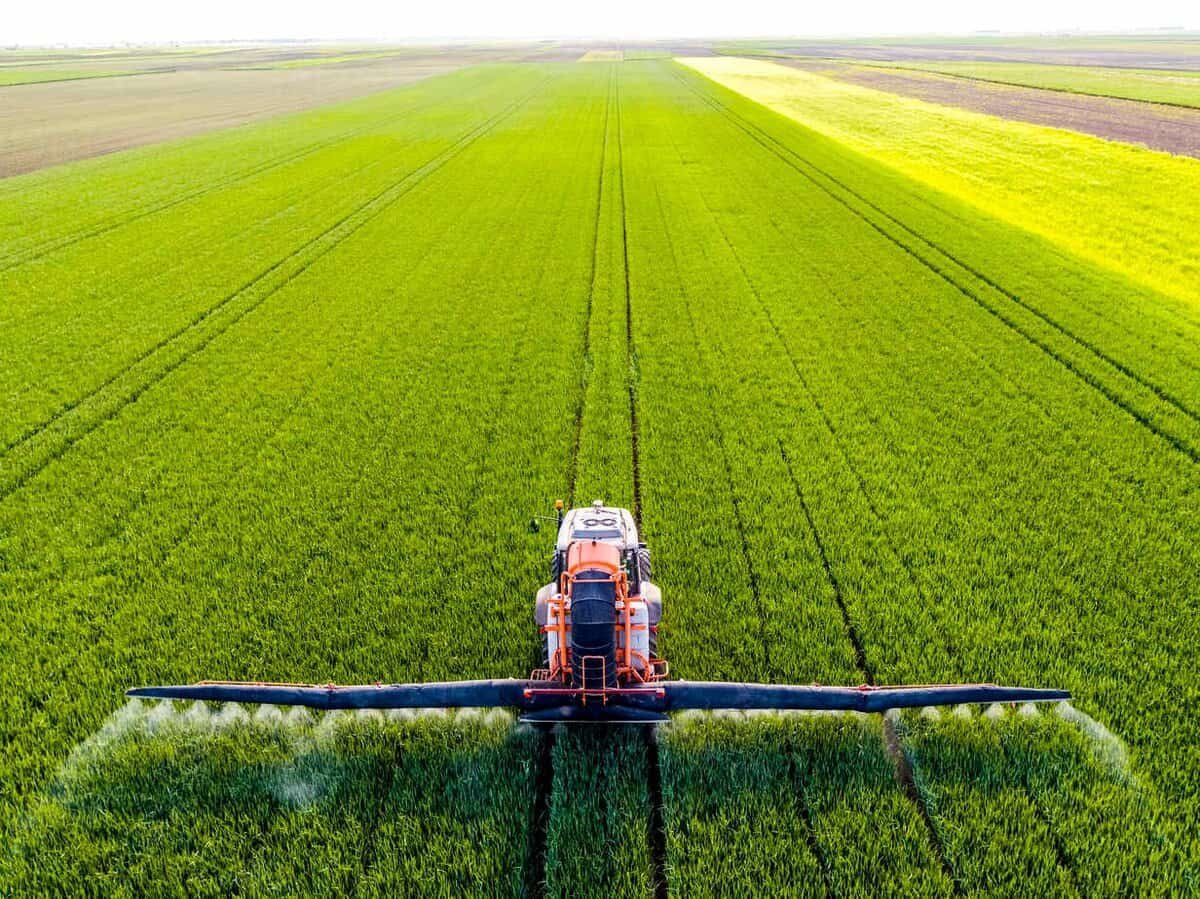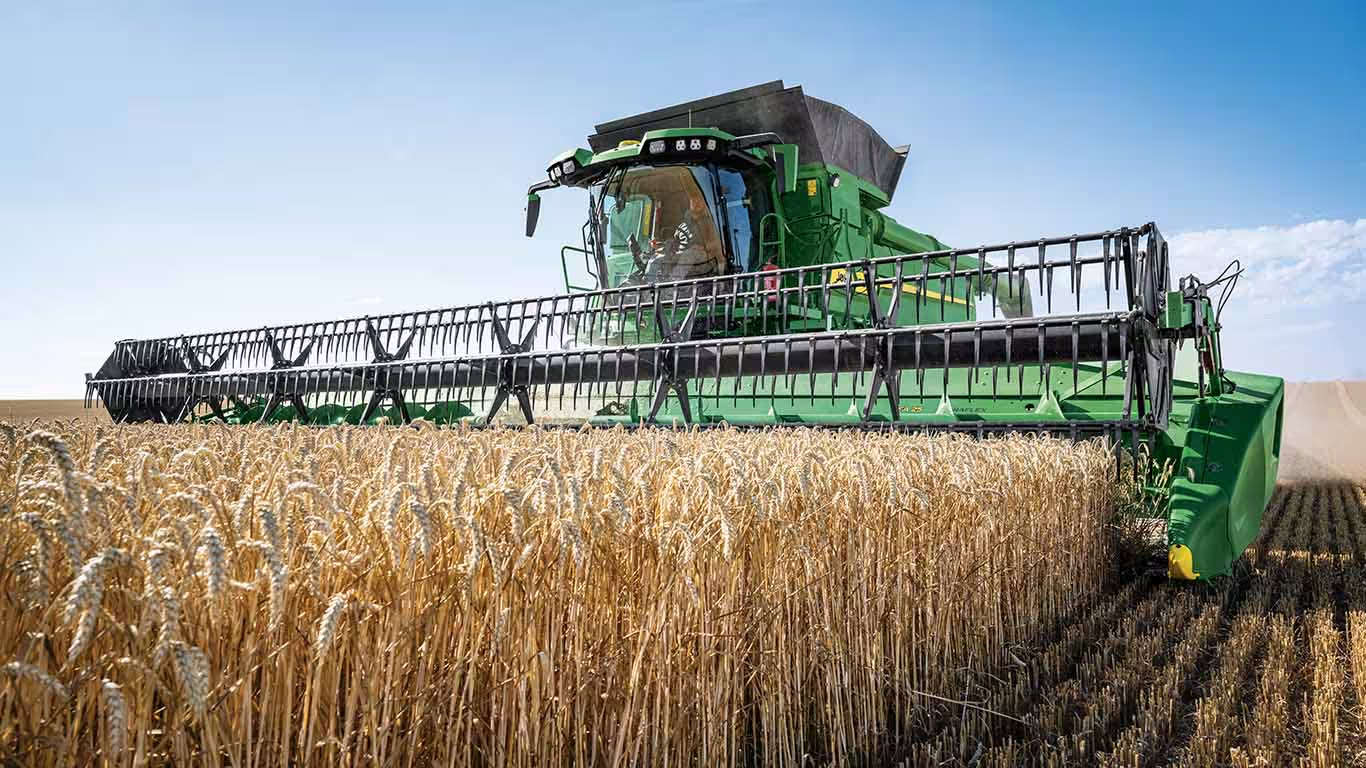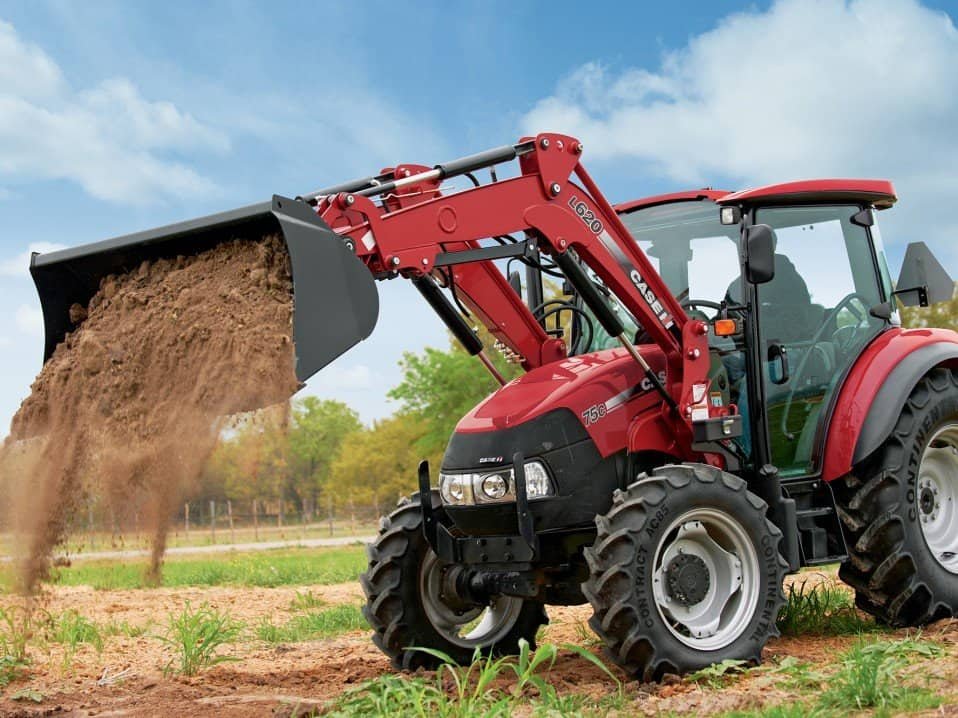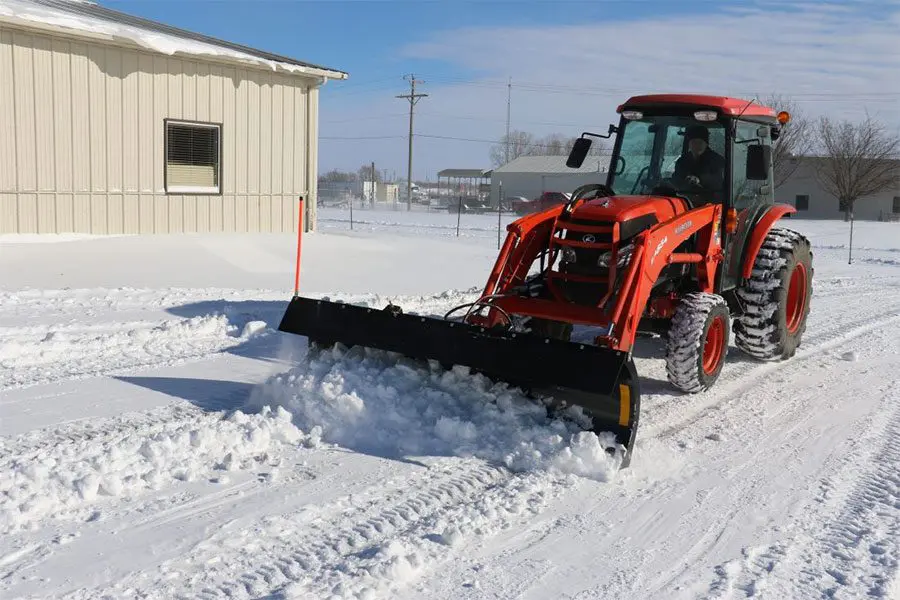Tractors are the powerhouse of modern agriculture. With their immense versatility, they help farmers efficiently tackle multiple tasks, boosting productivity and reducing labor. Here are 10 uses of tractor in agriculture that make them indispensable.
From tilling soil to harvesting crops, tractors play a crucial role in agriculture. They are used in various tasks, including planting, fertilizing, and even snow removal. In this article, we explore the top 10 uses of tractors that make them essential to farming operations.
Let’s dive deeper into each of these 10 crucial tasks tractors perform on farms worldwide.
1. Tillage and Soil Preparation
Tilling the soil is one of the oldest and most fundamental tasks in agriculture. This age-old practice involves breaking up and turning over the soil to create a suitable environment for planting seeds. Modern tractors equipped with advanced tillage tools such as plows, harrows, and cultivators play a crucial role in this process. These powerful machines are designed to efficiently prepare vast tracts of land for cultivation.
When tractors break up the soil, they create a loose and friable texture that makes it much easier to plant seeds. This process not only facilitates the initial planting but also helps manage weeds by uprooting and burying them, reducing their ability to compete with crops for nutrients and sunlight. Additionally, tillage incorporates crop residues from previous harvests back into the soil, enriching it with organic matter. This organic enrichment improves soil fertility and structure, making it more conducive to plant growth.
Moreover, tillage ensures optimal soil aeration, which is vital for the healthy development of plant roots. Properly aerated soil allows roots to penetrate deeper, access more nutrients, and absorb water more efficiently. This, in turn, leads to healthier plants that are more resilient to diseases and pests.
Tillage also plays a significant role in pest control. By disrupting the habitat of soil-dwelling pests and exposing them to the elements or predators, tillage can reduce pest populations. This helps in maintaining a healthier growing environment for crops.
The efficiency of tractors with tillage implements cannot be overstated. These machines can cover large areas quickly, making them highly effective in preparing land for crops. This efficiency is particularly important in modern agriculture, where timely planting is crucial for maximizing yields and ensuring food security.
Proper soil preparation through tillage is essential for healthy plant growth and higher crop yields. It improves soil structure, manages weeds and pests, and ensures optimal soil aeration. With the help of modern tractors and advanced tillage tools, farmers can efficiently prepare their fields, setting the stage for a successful growing season.

2. Planting Crops
Planting is another crucial aspect of farming where tractors truly shine. These versatile machines, when fitted with specialized attachments, can plant a wide variety of crops with remarkable efficiency.
Tractors equipped with seed drills or planters are designed to sow seeds at the optimal depth and spacing. This precision is essential for uniform crop growth, ensuring that each plant has the best possible start. By planting seeds at the right depth, the seeds can germinate more effectively, and by spacing them evenly, the plants can grow without competing too much with each other for resources like sunlight, water, and nutrients. This uniformity not only enhances the overall health of the crops but also maximizes their yield potential.
The use of tractors for planting crops such as cereals, vegetables, and grains offers significant advantages. It saves a considerable amount of time compared to manual planting methods and reduces the amount of manual labor required. This is particularly important in modern agriculture, where time is of the essence and labor resources may be limited.
Moreover, the precision of tractor planting ensures that crops are planted in rows that are evenly spaced. This uniformity is key for efficient farming and harvesting. Evenly spaced rows allow for better access to sunlight and air circulation, which can reduce the risk of diseases and pests. It also makes it easier for farmers to manage the crops during their growth and to harvest them efficiently, whether by hand or with machinery.
Tractors equipped with specialized planting attachments play a vital role in modern agriculture. They ensure that seeds are sown at the right depth and spacing, leading to uniform crop growth and maximizing yield potential. By saving time and reducing manual labor, tractors make the planting process more efficient and sustainable, contributing to the overall success of farming operations.

3. Irrigation
In regions where natural rainfall is scarce, tractors emerge as indispensable allies in agricultural irrigation. These powerful machines can be integrated into sophisticated irrigation systems, ensuring that crops receive the precise amount of water they need to flourish.
Tractors are often connected to irrigation pumps or systems, enabling them to transport water efficiently across vast fields. This capability is crucial for maintaining consistent soil moisture levels, even in drier climates. By distributing water evenly and effectively, tractors help ensure that crops remain adequately hydrated, supporting robust growth and development.
The use of tractors in irrigation systems offers several significant benefits. Firstly, it allows farmers to maintain more consistent crop growth by providing a reliable and steady supply of water. This consistency is vital for healthy plant development and can lead to higher yields. Secondly, tractors can help reduce water wastage by ensuring that water is distributed precisely where it is needed, rather than being lost to evaporation or runoff. This efficient water management is particularly important in arid regions, where water resources are limited and every drop counts.
Moreover, tractors can save on labor costs by automating the irrigation process. Instead of relying on manual labor to transport and distribute water, farmers can use tractors to handle these tasks more efficiently. This not only saves time and effort but also allows farmers to allocate their resources to other critical aspects of farming.
Tractors play a pivotal role in modern irrigation systems, especially in areas with insufficient rainfall. By ensuring consistent water distribution, reducing water wastage, and saving on labor costs, tractors help farmers maintain healthy and productive crops. Efficient water management facilitated by tractors is critical for crop survival and success in arid regions, making them an essential tool for sustainable agriculture.

4. Fertilizing Fields
Fertilization is a cornerstone of modern agriculture, playing a crucial role in maintaining healthy soil and significantly boosting crop yields. In this vital process, tractors emerge as indispensable tools, making the task of fertilizing large fields not only more efficient but also remarkably precise.
Equipped with advanced sprayers and spreaders, tractors enable farmers to distribute fertilizers evenly across vast expanses of land. This precision ensures that every plant receives the necessary nutrients for robust and optimal growth. Whether it’s a sprawling wheat field or a diverse vegetable patch, tractors can cover the ground swiftly and uniformly, delivering the right amount of nutrients to each part of the field.
Moreover, the use of tractors in fertilization allows for targeted application. Farmers can identify specific areas of the field that require additional nutrients and apply fertilizers precisely where they are needed most. This targeted approach not only reduces wastage but also ensures that crops grow efficiently, maximizing their potential yield. By avoiding over-fertilization in areas that don’t need it, farmers can also minimize environmental impact and save on costs.
Proper fertilization is essential for enhancing soil fertility. Healthy soil is the foundation of successful farming, and by enriching it with essential nutrients, farmers can promote better yields. This not only benefits the current crop but also sets the stage for sustainable agricultural practices in the long term. Healthy soil retains more water, supports a diverse ecosystem of beneficial microorganisms, and provides a stable environment for future plantings.
Fertilization is a critical component of modern farming, and tractors play a vital role in this process. By enabling precise and efficient distribution of fertilizers, tractors help farmers maintain healthy soil, promote robust crop growth, and achieve higher yields. This targeted and efficient approach to fertilization is essential for sustainable and productive agriculture, ensuring that the land remains fertile and productive for generations to come.

5. Harvesting Crops
Harvesting is often one of the most labor-intensive and time-consuming aspects of farming. However, with the use of tractors, this challenging task becomes much more manageable and efficient.
When paired with specialized harvesters or combines, tractors enable farmers to collect a wide variety of crops, such as wheat, corn, and vegetables, with remarkable efficiency. These powerful machines can cover large areas quickly, significantly reducing the time and labor required for harvesting. This efficiency is particularly important during peak harvest seasons when time is of the essence.
Tractors equipped with modern harvesting equipment ensure that crops are collected quickly and at the optimal time. Timing is crucial in harvesting, as it directly impacts the quality and quantity of the produce. By harvesting at the right time, farmers can maximize the yield and ensure that the crops are in the best possible condition. This is essential for preventing crop losses due to over-ripening, weather damage, or other factors.
Moreover, efficient harvesting helps ensure that produce reaches the market in a fresh and high-quality state. Freshness is a key factor in the marketability of agricultural products, and timely harvesting plays a significant role in maintaining this quality. By reducing the time between harvesting and delivery, tractors help farmers meet market demands and maintain customer satisfaction.
Tractors play a vital role in modern harvesting. By pairing with specialized equipment, they make the harvesting process more efficient, reducing the time and labor required. This efficiency ensures that crops are collected at the optimal time, improving both the quality and quantity of the harvest. Timely and efficient harvesting is crucial for preventing crop losses and ensuring that produce reaches the market in the best possible condition, making tractors an essential tool for modern farmers.

6. Transporting Goods
Once the harvest is complete, the next critical task is transporting the goods. This is where tractors truly shine, as they are exceptionally well-suited for handling the demands of moving large quantities of crops, tools, and supplies around the farm.
Equipped with sturdy trailers or robust wagons, tractors can effortlessly transport harvested crops from the fields to storage areas, processing facilities, or loading points for distribution. This capability not only saves a significant amount of time but also reduces the physical effort required by farm workers. Whether it’s bushels of wheat, crates of vegetables, or bales of hay, tractors can handle it all with ease.
One of the standout features of tractors is their ability to navigate uneven terrain with ease. Farms often have rugged landscapes, including hills, ditches, and muddy fields, which can pose challenges for other types of vehicles. Tractors, with their powerful engines and rugged design, are built to handle these conditions. Their high ground clearance and four-wheel drive ensure stability and traction, even on the most uneven surfaces.
This ability to move goods efficiently across challenging terrain is crucial for maintaining smooth farm operations. It helps ensure that crops are transported quickly and safely, reducing the risk of spoilage or damage. Timely transportation is particularly important for perishable goods, where delays can lead to significant losses. By streamlining the movement of goods, tractors contribute to a more efficient and productive farming process.
Tractors are indispensable for post-harvest transportation. Their capacity to handle heavy loads and navigate uneven terrain ensures that crops, tools, and supplies are moved efficiently and safely. This not only saves time and effort but also minimizes the risk of spoilage and damage, making tractors a vital component of modern farm operations.

7. Mowing and Grass Cutting
Maintaining fields and pastures is an ongoing and essential task for farmers, and tractors play a crucial role in these efforts. One of the primary duties is to mow grass and clear weeds, ensuring that fields and pastures remain healthy and productive.
With the help of mower attachments, tractors can efficiently cut down grass and weeds across fields and pastures. This process is vital for preventing these plants from taking over and competing with crops for essential resources such as water, sunlight, and nutrients. By keeping the growth of grass and weeds in check, farmers can ensure that their crops have the best possible conditions to thrive.
Mowing is not just about keeping fields tidy; it also serves a broader purpose in managing pastureland for livestock. Regular mowing helps maintain the health of the fields, ensuring that they remain suitable for grazing. This practice promotes better growth for both crops and forage plants, creating a more sustainable and productive environment for livestock to graze in.
Moreover, mowing can help prevent the spread of invasive species and reduce the risk of pests and diseases. By maintaining a clear and healthy landscape, farmers can create an environment that supports robust plant growth and minimizes potential threats.
Tractors equipped with mower attachments are essential tools for maintaining fields and pastures. They help keep grass and weeds under control, ensuring that crops and forage plants have the resources they need to grow. Regular mowing also supports the health of pastureland, making it more suitable for grazing and promoting overall agricultural sustainability.
8. Cleaning Fields and Maintaining Roads
Tractors are versatile tools that go beyond planting and harvesting; they are also essential for maintaining the overall cleanliness and functionality of a farm. After the harvest, fields often need to be cleaned up to prepare for the next planting season, and tractors equipped with front loaders or graders can efficiently handle this task. These attachments enable tractors to clear away debris, rocks, and other obstacles that may have accumulated in the fields, ensuring that the land is ready for the next round of crops.
In addition to field cleanup, tractors play a crucial role in maintaining farm roads. These roads are vital for accessing different parts of the farm, transporting equipment, and delivering supplies. Tractors with graders can smooth out uneven surfaces, fill in potholes, and ensure that the roads remain passable throughout the year. Properly maintained roads are essential for efficient farm operations, as they allow farmers to move equipment and goods with ease, reducing the risk of damage to machinery and minimizing delays.
Cleaning fields after harvest is not just about aesthetics; it also has practical benefits. Removing debris helps prevent it from interfering with the next planting season. Debris can harbor pests and diseases, and if left in the fields, it can damage planting equipment or inhibit the growth of new crops. By using tractors to clear the fields, farmers can ensure a clean slate for the next planting cycle.
Tractors equipped with front loaders and graders are indispensable for maintaining farm roads and cleaning up fields after harvest. These tasks are crucial for ensuring smooth farm operations and preparing the land for future planting. By keeping fields and roads clear and well-maintained, farmers can enhance efficiency, reduce the risk of equipment damage, and promote a healthy environment for crop growth.

9. Soil Erosion Control
Soil erosion is a significant and growing threat to the health and productivity of farmland. However, tractors can play a crucial role in mitigating this issue through a variety of effective erosion control measures.
One such measure is the planting of cover crops. Tractors equipped with seed drills or planters can efficiently sow cover crops like clover, rye, or vetch. These crops help stabilize the soil by creating a protective layer that reduces the impact of wind and water erosion. The roots of cover crops also help bind the soil together, enhancing its structure and preventing it from being washed or blown away.
In addition to planting cover crops, tractors can be used to install erosion control devices. These devices, such as terraces, grassed waterways, and contour strips, are designed to slow down water runoff and reduce soil loss. For example, terraces can be constructed using tractors to create stepped levels on sloped land, which helps to trap water and prevent it from rushing down the slope and eroding the soil. Grassed waterways can be established to channel water safely off the field, while contour strips can be planted to follow the natural contours of the land, reducing the speed of water flow.
Preventing soil erosion is not just a short-term solution; it is essential for maintaining the long-term health and fertility of farmland. By using tractors for erosion control, farmers can protect their fields from degradation. This proactive approach ensures that the soil remains rich in nutrients and organic matter, which is crucial for the growth of healthy crops. In essence, erosion control helps preserve the very foundation of agriculture, ensuring that the land remains productive for future generations.
Soil erosion poses a serious threat to farmland, but tractors equipped with the right tools and technologies can significantly reduce this risk. By planting cover crops and installing erosion control devices, farmers can stabilize the soil, reduce the impact of wind and water erosion, and maintain the fertility of their fields. These measures are vital for the long-term sustainability of agricultural land and the continued success of farming operations.

10. Snow Removal
In colder climates, where winter brings heavy snowfall, the task of snow removal becomes absolutely crucial for maintaining farm operations. Tractors, with their robust design and powerful engines, are perfectly suited to handle this challenging job.
Equipped with snow plows or blowers, tractors can efficiently clear snow from farm roads, driveways, and around barns and equipment sheds. This ensures that farmers have safe and accessible routes to their land and equipment, even during the harshest winter months. Whether it’s a light dusting or a major snowstorm, tractors can quickly and effectively remove snow, keeping pathways clear and reducing the risk of accidents.
Snow removal is not just about convenience; it’s essential for the continuity of farm operations. By preventing snow accumulation on farm roads, tractors help reduce the risk of damage to equipment and vehicles. Heavy snow can cause significant wear and tear on machinery, and icy conditions can make it difficult to access critical areas of the farm. Regular snow removal ensures that these issues are minimized, allowing farmers to continue their daily tasks without interruption.
Moreover, efficient snow removal helps protect livestock and crops. Access to barns and feeding areas is crucial for the well-being of animals, and maintaining clear paths ensures that they receive proper care and feeding. For crops stored in barns or covered areas, preventing snow buildup reduces the risk of structural damage and ensures that these valuable resources remain safe.
In colder climates, snow removal is a vital task for maintaining farm operations during winter. Tractors equipped with snow plows or blowers are indispensable tools for clearing snow from farm roads and around critical areas. This ensures safe access, reduces the risk of equipment damage, and allows farmers to continue their operations without interruption, safeguarding both livestock and crops.

Conclusion: Tractors – The Backbone of Modern Farming
With their ability to perform a wide range of tasks, tractors are a farmer’s most valuable tool. They improve productivity, reduce costs, and ensure that farms operate efficiently year-round.
Given their versatility, it’s no surprise that tractors are considered the backbone of modern farming. Whether it’s planting, fertilizing, or harvesting, tractors help farmers meet the demands of the agricultural industry while maintaining sustainability.


